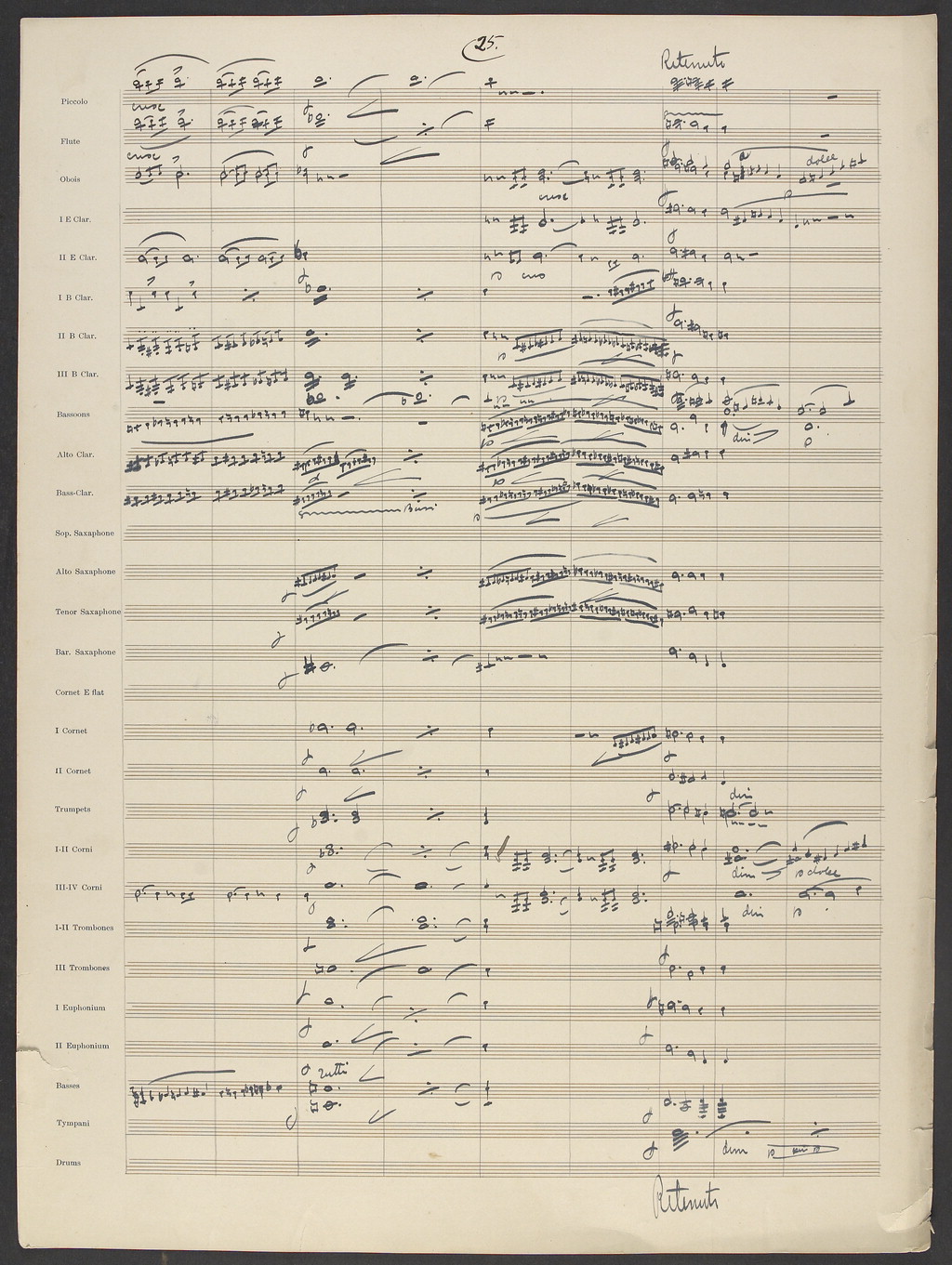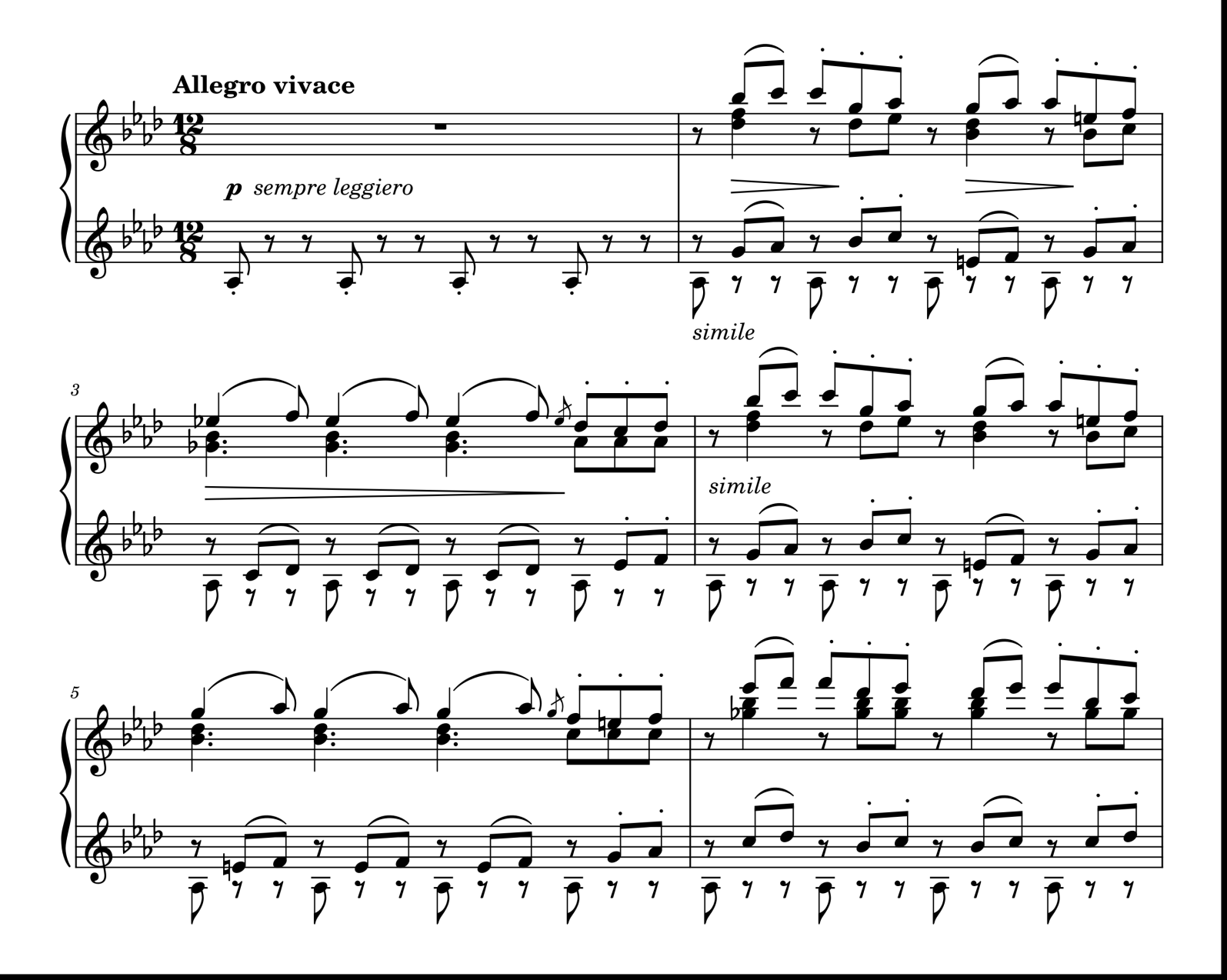|
Arranger
In music, an arrangement is a musical adaptation of an existing composition. Differences from the original composition may include reharmonization, melodic paraphrasing, orchestration, or formal development. Arranging differs from orchestration in that the latter process is limited to the assignment of notes to instruments for performance by an orchestra, concert band, or other musical ensemble. Arranging "involves adding compositional techniques, such as new thematic material for introductions, transitions, or modulations, and endings. Arranging is the art of giving an existing melody musical variety".(Corozine 2002, p. 3) In jazz, a memorized (unwritten) arrangement of a new or pre-existing composition is known as a ''head arrangement''. Classical music Arrangement and transcriptions of classical and serious music go back to the early history of classical music. Eighteenth century J. S. Bach frequently made arrangements of his own and other composers' pie ... [...More Info...] [...Related Items...] OR: [Wikipedia] [Google] [Baidu] |
Jazz
Jazz is a music genre that originated in the African-American communities of New Orleans, Louisiana, in the late 19th and early 20th centuries. Its roots are in blues, ragtime, European harmony, African rhythmic rituals, spirituals, hymns, marches, vaudeville song, and dance music. Since the 1920s Jazz Age, it has been recognized as a major form of musical expression in traditional and popular music. Jazz is characterized by swing and blue notes, complex chords, call and response vocals, polyrhythms and improvisation. As jazz spread around the world, it drew on national, regional, and local musical cultures, which gave rise to different styles. New Orleans jazz began in the early 1910s, combining earlier brass band marches, French quadrilles, biguine, ragtime and blues with collective polyphonic improvisation. However, jazz did not begin as a single musical tradition in New Orleans or elsewhere. In the 1930s, arranged dance-oriented swing big bands, ... [...More Info...] [...Related Items...] OR: [Wikipedia] [Google] [Baidu] |
Composition (music)
Musical composition can refer to an original piece or work of music, either vocal or instrumental, the structure of a musical piece or to the process of creating or writing a new piece of music. People who create new compositions are called composers. Composers of primarily songs are usually called songwriters; with songs, the person who writes lyrics for a song is the lyricist. In many cultures, including Western classical music, the act of composing typically includes the creation of music notation, such as a sheet music "score", which is then performed by the composer or by other musicians. In popular music and traditional music, songwriting may involve the creation of a basic outline of the song, called the lead sheet, which sets out the melody, lyrics and chord progression. In classical music, orchestration (choosing the instruments of a large music ensemble such as an orchestra which will play the different parts of music, such as the melody, accompaniment, count ... [...More Info...] [...Related Items...] OR: [Wikipedia] [Google] [Baidu] |
Orchestration
Orchestration is the study or practice of writing music for an orchestra (or, more loosely, for any musical ensemble, such as a concert band) or of adapting music composed for another medium for an orchestra. Also called "instrumentation", orchestration is the assignment of different instruments to play the different parts (e.g., melody, bassline, etc.) of a musical work. For example, a work for solo piano could be adapted and orchestrated so that an orchestra could perform the piece, or a concert band piece could be orchestrated for a symphony orchestra. In classical music, composers have historically orchestrated their own music. Only gradually over the course of music history did orchestration come to be regarded as a separate compositional art and profession in itself. In modern classical music, composers almost invariably orchestrate their own work. Two notable exceptions to this are Ravel's orchestration of Mussorgsky's solo piano work Pictures at an Exhibition and Malco ... [...More Info...] [...Related Items...] OR: [Wikipedia] [Google] [Baidu] |
Music
Music is the arrangement of sound to create some combination of Musical form, form, harmony, melody, rhythm, or otherwise Musical expression, expressive content. Music is generally agreed to be a cultural universal that is present in all human societies. Definitions of music vary widely in substance and approach. While scholars agree that music is defined by a small number of elements of music, specific elements, there is no consensus as to what these necessary elements are. Music is often characterized as a highly versatile medium for expressing human creativity. Diverse activities are involved in the creation of music, and are often divided into categories of musical composition, composition, musical improvisation, improvisation, and performance. Music may be performed using a wide variety of musical instruments, including the human voice. It can also be composed, sequenced, or otherwise produced to be indirectly played mechanically or electronically, such as via a music box ... [...More Info...] [...Related Items...] OR: [Wikipedia] [Google] [Baidu] |
Bach Partita 3 For Violin Prelude 01
Johann Sebastian Bach (German: �joːhan zeˈbasti̯an baχ ( – 28 July 1750) was a German composer and musician of the late Baroque period. He is known for his prolific output across a variety of instruments and forms, including the orchestral ''Brandenburg Concertos''; solo instrumental works such as the cello suites and sonatas and partitas for solo violin; keyboard works such as the '' Goldberg Variations'' and '' The Well-Tempered Clavier''; organ works such as the ' and the Toccata and Fugue in D minor; and choral works such as the '' St Matthew Passion'' and the Mass in B minor. Since the 19th-century Bach Revival, he has been widely regarded as one of the greatest composers in the history of Western music. The Bach family had already produced several composers when Johann Sebastian was born as the last child of a city musician, Johann Ambrosius, in Eisenach. After being orphaned at age 10, he lived for five years with his eldest brother, Johann Ch ... [...More Info...] [...Related Items...] OR: [Wikipedia] [Google] [Baidu] |
Art Music
Art music (alternatively called classical music, cultivated music, serious music, and canonic music) is music considered to be of high culture, high phonoaesthetic value. It typically implies advanced structural and theoretical considerationsJacques Siron, "Musique Savante (Serious music)", ''Dictionnaire des mots de la musique'' (Paris: Outre Mesure): 242. or a written musical tradition.Denis Arnold, "Art Music, Art Song", in ''The New Oxford Companion to Music, Volume 1: A–J'' (Oxford and New York: Oxford University Press, 1983): 111. In this context, the terms "serious" or "cultivated" are frequently used to present a contrast with ordinary, everyday music (i.e. popular music, popular and folk music, also called "vernacular music"). List of classical and art music traditions, Many cultures have art music traditions; in the Western world, the term typically refers to Western classical music. Definition In Western literature, "Art music" is mostly used to refer to music des ... [...More Info...] [...Related Items...] OR: [Wikipedia] [Google] [Baidu] |
Classical Music
Classical music generally refers to the art music of the Western world, considered to be #Relationship to other music traditions, distinct from Western folk music or popular music traditions. It is sometimes distinguished as Western classical music, as the term "classical music" can also be applied to List of classical and art music traditions, non-Western art musics. Classical music is often characterized by formality and complexity in its musical form and Harmony, harmonic organization, particularly with the use of polyphony. Since at least the ninth century, it has been primarily a written tradition, spawning a sophisticated music notation, notational system, as well as accompanying literature in music analysis, analytical, music criticism, critical, Music history, historiographical, musicology, musicological and Philosophy of music, philosophical practices. A foundational component of Western culture, classical music is frequently seen from the perspective of individual or com ... [...More Info...] [...Related Items...] OR: [Wikipedia] [Google] [Baidu] |
Partita For Violin No
Partita (also ''partie'', ''partia'', ''parthia'', or ''parthie'') closely resemble the dance suites of the Baroque Period (and are often used synonymously with suites) with the addition of a prelude movement at the beginning of each partita. It was originally the name for a single-instrumental piece of music (16th and 17th centuries), but Johann Kuhnau (Thomaskantor at Leipzig until 1722), his student Christoph Graupner, and Johann Sebastian Bach (1685–1750) used it for collections of musical pieces, as a synonym for suite. In the early Baroque period, a partita referred to a string of variations or a piece in parts that reflected different dances. Keyboard partitas Girolamo Frescobaldi (1583–1643) wrote keyboard partitas as variations that were based on popular dance melodies of the early Baroque period such the R''omannesca, La Monachina, Ruggiero,'' and ''La Follio.'' Dietrich Buxtehude (1637–1707) and Johann Froberger (1616–1667) wrote dance suites (ninete ... [...More Info...] [...Related Items...] OR: [Wikipedia] [Google] [Baidu] |
Violin
The violin, sometimes referred to as a fiddle, is a wooden chordophone, and is the smallest, and thus highest-pitched instrument (soprano) in regular use in the violin family. Smaller violin-type instruments exist, including the violino piccolo and the pochette (musical instrument), pochette, but these are virtually unused. Most violins have a hollow wooden body, and commonly have four strings (music), strings (sometimes five-string violin, five), usually tuned in perfect fifths with notes G3, D4, A4, E5, and are most commonly played by drawing a bow (music), bow across the strings. The violin can also be played by plucking the strings with the fingers (pizzicato) and, in specialized cases, by striking the strings with the wooden side of the bow (col legno). Violins are important instruments in a wide variety of musical genres. They are most prominent in the Western classical music, Western classical tradition, both in ensembles (from chamber music to orchestras) and as solo ... [...More Info...] [...Related Items...] OR: [Wikipedia] [Google] [Baidu] |
Bach Partita 3 For Violin Prelude 02
Johann Sebastian Bach (German: �joːhan zeˈbasti̯an baχ ( – 28 July 1750) was a German composer and musician of the late Baroque period. He is known for his prolific output across a variety of instruments and forms, including the orchestral ''Brandenburg Concertos''; solo instrumental works such as the cello suites and sonatas and partitas for solo violin; keyboard works such as the '' Goldberg Variations'' and '' The Well-Tempered Clavier''; organ works such as the ' and the Toccata and Fugue in D minor; and choral works such as the '' St Matthew Passion'' and the Mass in B minor. Since the 19th-century Bach Revival, he has been widely regarded as one of the greatest composers in the history of Western music. The Bach family had already produced several composers when Johann Sebastian was born as the last child of a city musician, Johann Ambrosius, in Eisenach. After being orphaned at age 10, he lived for five years with his eldest brother, Johann Ch ... [...More Info...] [...Related Items...] OR: [Wikipedia] [Google] [Baidu] |










